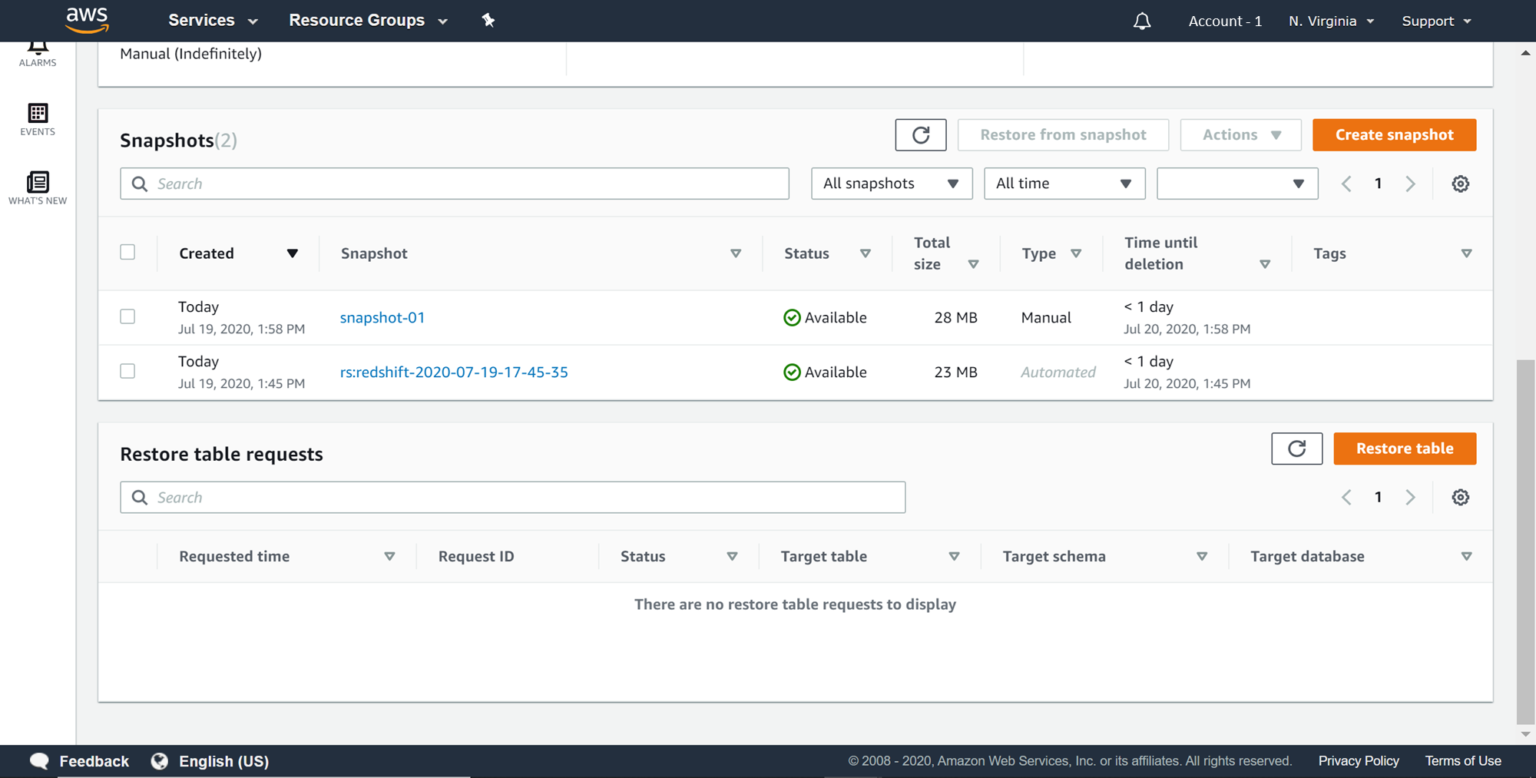

executemany ( "insert into book (bookname, author) values ( %s, %s )", ) cursor. execute ( "create Temp table book(bookname varchar,author varchar)" ) cursor. Retrieving query results as a pandas.DataFrame import pandas cursor.

CANNOT CREATE REDSHIFT CLUSTER IN WEST PASSWORD
connect ( iam = True, database = 'dev', db_user = 'awsuser', password = '', user = '', cluster_identifier = 'examplecluster', access_key_id = "my_aws_access_key_id", secret_access_key = "my_aws_secret_access_key", session_token = "my_aws_session_token", region = "us-east-2" ) Integration with pandas If a region is not provided in ~/.aws/config or you would like to override its value, region may be passed to connect(.).Īlternatively, IAM credentials can be supplied directly to connect(.) using AWS credentials as shown below: import redshift_connector # Connects to Redshift cluster using IAM credentials from default profile defined in ~/.aws/credentials conn = redshift_connector. aws_access_key_id = "my_aws_access_key_id" aws_secret_access_key = "my_aws_secret_access_key" aws_session_token = "my_aws_session_token" # ~/.aws/config connect ( iam = True, database = 'dev', db_user = 'awsuser', password = '', user = '', cluster_identifier = 'examplecluster', profile = 'default' ) # ~/.aws/credentials IAM Credentials can be supplied directly to connect(.) using an AWS profile as shown below: import redshift_connector # Connects to Redshift cluster using IAM credentials from default profile defined in ~/.aws/credentials conn = redshift_connector. For exception definitions, please see redshift_connector/error.py Example using IAM Credentials Redshift_connector uses the guideline for exception handling specified in the Python DB-API. paramstyle = 'named' sql = 'insert into foo(bar, jar) VALUES(:p1, :p2)' cursor. execute ( sql, ( 1, "hello world" )) # named redshift_connector. paramstyle = 'numeric' sql = 'insert into foo(bar, jar) VALUES(:1, :2)' cursor. execute ( sql, ( 1, "hello world" )) # numeric redshift_connector. paramstyle = 'qmark' sql = 'insert into foo(bar, jar) VALUES(?, ?)' cursor. Valid values for paramstyle include qmark, numeric, named, format, pyformat. The paramstyle for a cursor can be modified via cursor.paramstyle. autocommit = False Configuring cursor paramstyle # Make sure we're not in a transaction conn. It can be turned on by using the autocommit property of the connection. fetchall () print ( result ) > (, ) Enabling autocommitįollowing the DB-API specification, autocommit is off by default. execute ( "select * from book" ) result : tuple = cursor. connect ( host = '.', database = 'dev', user = 'awsuser', password = 'my_password' ) cursor : redshift_connector. Please open an issue with our project to request new integrations or get support for a redshift_connector issue seen in an existing integration.īasic Example import redshift_connector # Connects to Redshift cluster using AWS credentials conn = redshift_connector. Redshift_connector integrates with various open source projects to provide an interface to Amazon Redshift. Please reach out to the team by opening an issue or starting a discussion to help us fill in the gaps in our documentation. We are working to add more documentation and would love your feedback. $ git clone $ cd redshift_connector $ pip install.
CANNOT CREATE REDSHIFT CLUSTER IN WEST INSTALL
You may install from source by cloning this repository. Getting Started Install from BinaryĬonda install -c conda-forge redshift_connector This pure Python connector implements Python Database API Specification 2.0. Supported Amazon Redshift features include: Easy integration with pandas and numpy, as well as support for numerous Amazon Redshift specific features help you get the most out of your data Redshift_connector is the Amazon Redshift connector for


 0 kommentar(er)
0 kommentar(er)
